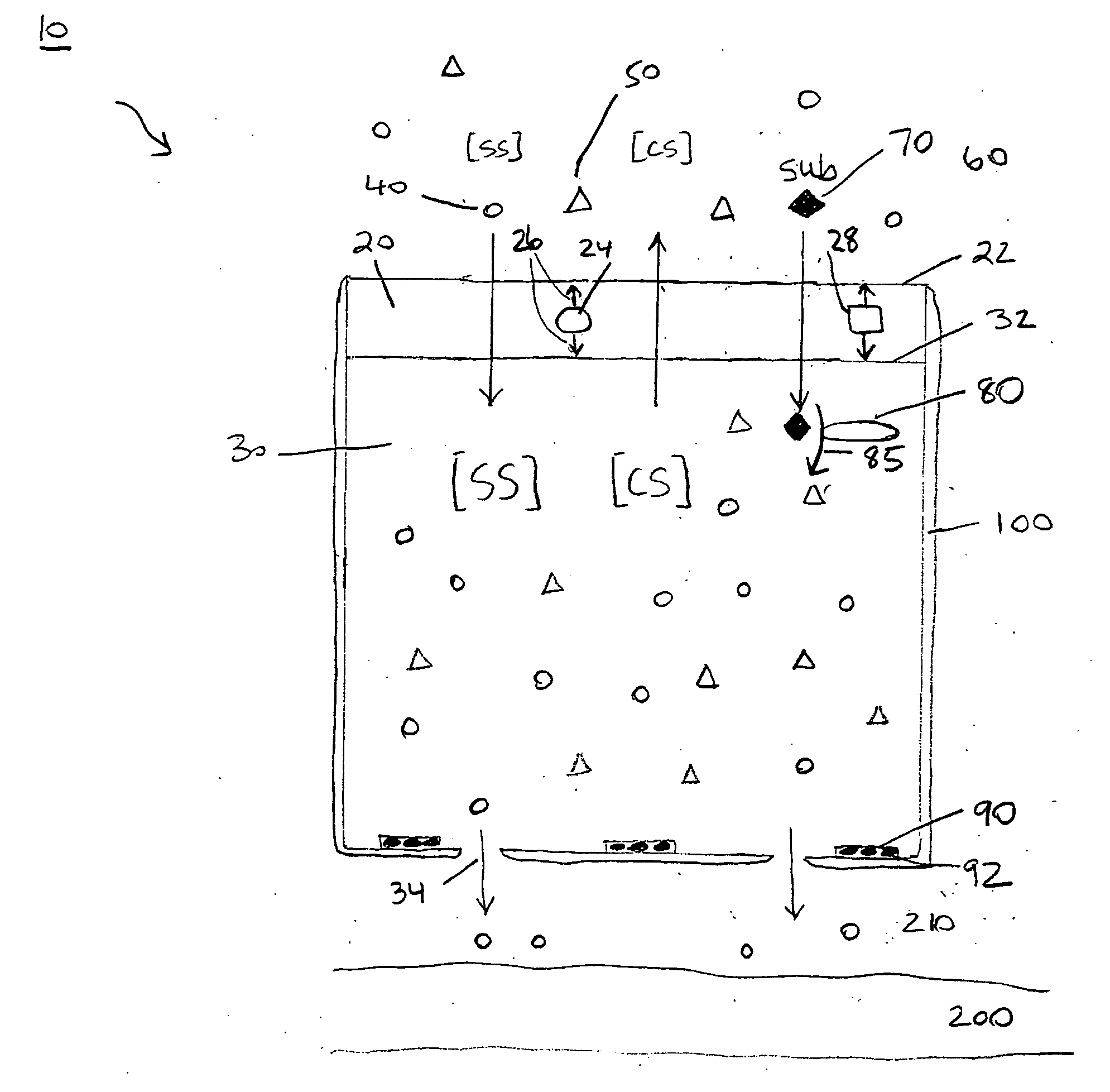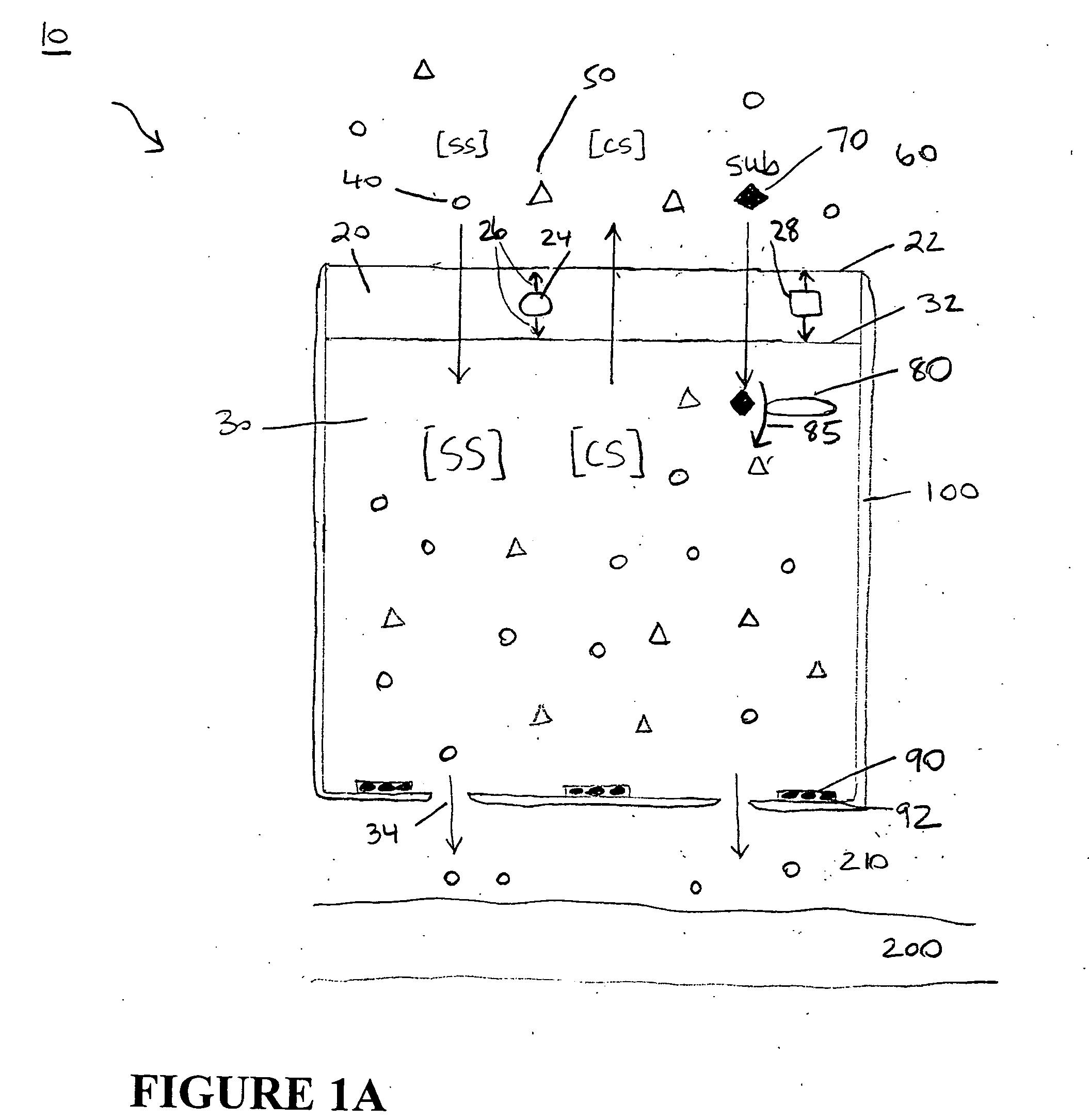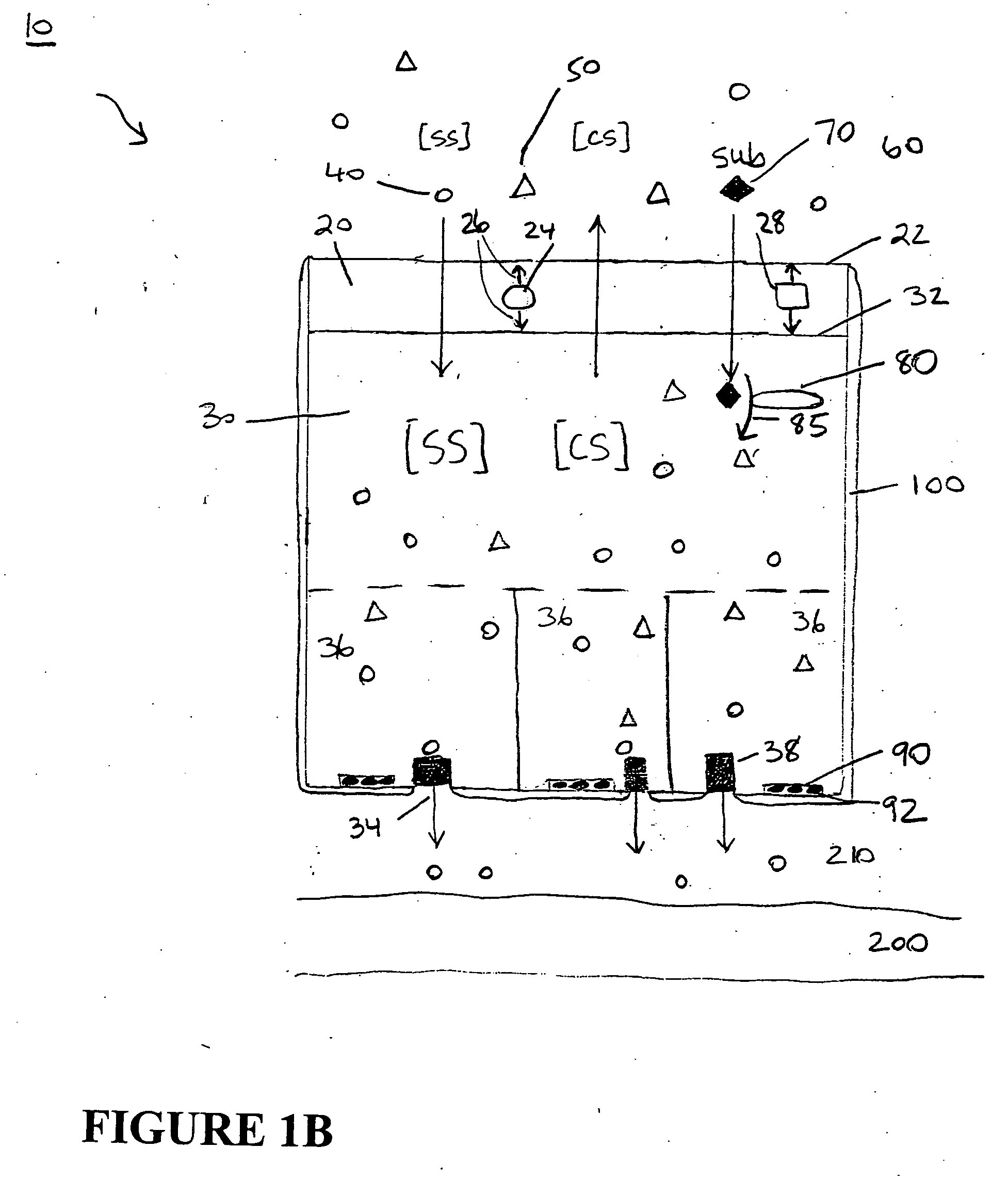Neural stimulation device employing renewable chemical stimulation
a technology of chemical stimulation and neurostimulation, which is applied in the direction of osmotic delivery, prosthesis, therapy, etc., can solve the problems of loss or absence of sensory and/or motor function, lack of focal stimulation, and limited potential of neurostimulation or repair of neurostimulation
- Summary
- Abstract
- Description
- Claims
- Application Information
AI Technical Summary
Benefits of technology
Problems solved by technology
Method used
Image
Examples
example 1
[0202] Materials and Methods
[0203] Single cell recordings were made from the axons of rabbit retinal ganglion cells in vitro. Data was recorded and analyzed using Spike2 (Cambridge Electronic Design). The ganglion cells were stimulated over the optical receptive field with a multibarrel micropipette (7-barrel, FHC, Inc.) which contained various concentrations of KCl (0-30 mM in an osmotically balanced NaCl solution (˜300 mOsm). The micropipette solutions were ejected by using a mulitchannel pressure ejector (PM8000, MDI Systems). All solutions contained Azure B (0.5 mg / ml) to enable visualization of the solution being ejected. Pulse durations of 20-100 msecs were used.
[0204] Experimental Results
[0205]FIG. 12 shows a typical record from a single cell. Response is shown for a cell stimulated with a 20 msec pulse of 10 mM K+, pressure of 40 p.s.i. and a volume of approximately 100 pL. FIG. 13 shows peri-stimulus histograms (PSTH) for a representative cell stimulated by increasing [K...
PUM
 Login to View More
Login to View More Abstract
Description
Claims
Application Information
 Login to View More
Login to View More - R&D
- Intellectual Property
- Life Sciences
- Materials
- Tech Scout
- Unparalleled Data Quality
- Higher Quality Content
- 60% Fewer Hallucinations
Browse by: Latest US Patents, China's latest patents, Technical Efficacy Thesaurus, Application Domain, Technology Topic, Popular Technical Reports.
© 2025 PatSnap. All rights reserved.Legal|Privacy policy|Modern Slavery Act Transparency Statement|Sitemap|About US| Contact US: help@patsnap.com



